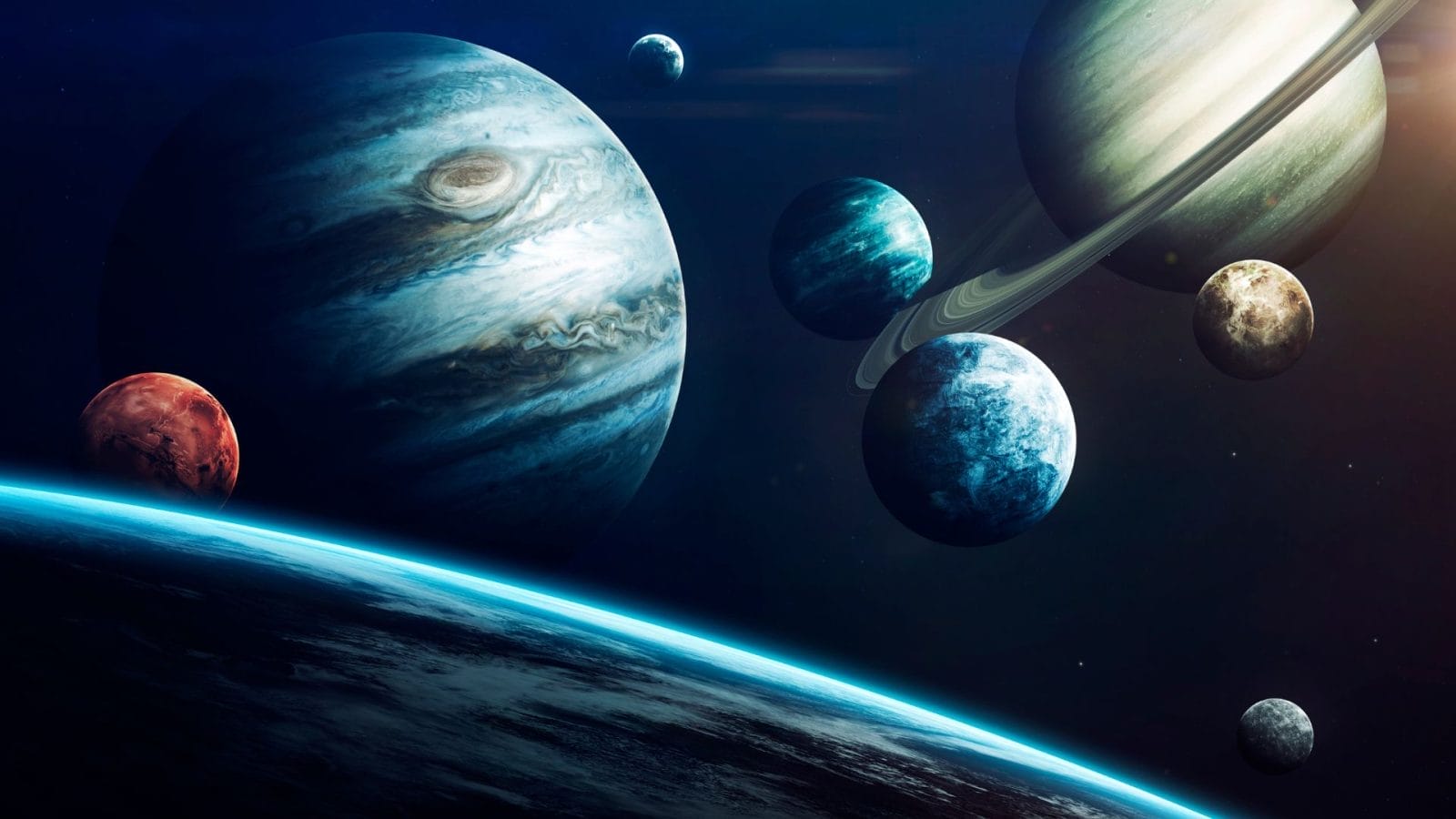Astrology should not be a study of planets and their influence on people. It is more appropriate for analyzing peoples’ inner archetypes and their effects. This article urges us to use the research of Richard Tarnas to gain a proper understanding of astrology.
Astrology Is Not About Planets
by William Bezanson
I have long been intrigued by astrology. But, I was skeptical about how a tiny planet such as Mercury, or even a huge one like Jupiter, at such great distances, could have even the slightest influence on our lives.
And yet, there seemed such accuracy in astrology’s description of our personal characteristics.
Eventually, I concluded that astrology works, but I had no idea why it worked. I refused to believe that it worked by means of planetary gravitational or magnetic influences, which seemed to be the implicit explanation of the popular astrologers.
Then, one middle-of-the-night awakening revealed to me the proper explanation. I awoke with a strong urge to open the book Jung to Live By, by the Jungian Analyst Eugene Pascal, one of the most accessible books on the Jungian worldview. I started re-reading about archetypes, specifically about the various deities that manifest through the collective unconscious. Archetypes are autonomous plexuses of energy residing in the collective unconscious, often having more impact on our lives than our thinking egos. For example, when we are inexplicably aggressive, we are likely being dominated at that time by the archetype of Mars, the god of war.
What suddenly occurred to me, in an intuitive flash, was that astrology is not about the planets’ influence on us but about the archetypes’ influence on us. Not the outer, but the inner. Not the planet Mars, but the archetype of Mars.
Long ago in Mesopotamia, people began to see images in the arrangements of stars in the night sky. One saw what looked like a ram, and others saw a set of twins, a lion, and so on. Stories were told, and eventually, the images became part of their culture. People attributed characteristics to the figures, or constellations (“star groupings”), in the heavens, such as those of a hunter, a warrior, or a water bearer. Also, people gradually observed a correspondence between their moods and feelings and the positions of planets moving through the constellations.
As an example of how this early thinking evolved, consider the planet Mercury. It has long been associated with communication and learning but also with restlessness and inconsistency. About three times per year Mercury has a retrograde motion, that is, it appears to move backwards in the sky for a few weeks. People who felt an attunement with Mercury noticed that during these retrograde periods, they felt out of sorts, made mistakes, and behaved erratically. Eventually, such correspondences and behavioral patterns solidified over the centuries into systems of astrology that we know today.
In a similar way, various deities in the heavens were projections of the inner emotions, feelings, and moods that people experienced.
So the key point here is that it is not the planets or the constellations ruling our lives. The signs of the zodiac are psychological projections on the heavens from our deep unconscious. The motion of the planets through the various zodiac signs corresponds to moods and influences that we feel from our unconscious, that is, from the various archetypes that project externally as deities.
Planetary astrology is one of our realities. However, the actuality is closer to archetypal astrology, as introduced here.
To paraphrase a simple analogy that Richard Tarnas uses when the hands on a clock line up at 12 noon, it is not the clock that causes it to be noontime or makes us hungry for lunch; it merely indicates the current time. Our long-standing habit, plus our cultural tendency to eat at noontime, is the cause of our feeling hungry. Similarly, planets do not cause anything to happen in our lives; they are simply indicative of the cosmic state of the archetypal forces at that time.
The planets are indicators, not causes, of our behavioral influences. As above, so below. As within, so without.
Discovering this explanation for myself (or, rather, realizing what many Jungians and others already knew) gives me the energy and enthusiasm to explore it for years to come. Eventually, we may come to understand that the planets really do influence us physically, perhaps by some mechanism that we don’t comprehend yet, such as subtle magnetic fields, or by a deeper understanding of the Oneness of All. If everything is One—which I believe but don’t fully understand—then we and the planets are one, and thus, of course, they influence us, and we influence them.
As for why the archetypes and planets are in such close synchronization and why there are twelve signs in our zodiac, these and related topics are subjects for another article.
I hope that my explanation here might trigger your curiosity to explore these fascinating lines further. Ultimately, my hope is to nudge readers to recognize the difference between reality (planetary astrology, in this case) and actuality (archetypal astrology).
An especially relevant and important article supporting the views stated here is by Richard Tarnas, “An Introduction to Archetypal Astrological Analysis”, http://www.gaiamind.org/AstroIntro.html.
(An earlier version of this article first appeared in OMTimes in April 2013. It is worth publishing again because it makes an important correction to the standard view of planetary astrology.)
Click HERE to Connect with your Daily Horoscope on OMTimes!
Visit Our Astrology Store for Personalized Reports
About the Author:
William Bezanson is a regular contributor to OMTimes. Retired from a career in electrical engineering, he now writes on spirituality and world stewardship. He lives with his wife in Ottawa, Canada.
OMTimes is the premier Spiritually Conscious Magazine. Follow Us On Facebook, Twitter, Instagram, Linkedin, Pinterest, and Youtube
OMTimes Magazine is one of the leading on-line content providers of positivity, wellness and personal empowerment. OMTimes Magazine - Co-Creating a More Conscious Reality








